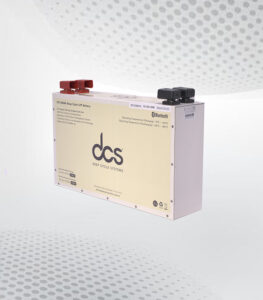Introduction
In the world of medical devices, quality and compliance are paramount. ISO 13485 certification is the international standard that outlines the requirements for a quality management system (QMS) specific to the medical device industry. Achieving ISO 13485 certification not only demonstrates a commitment to quality and regulatory compliance but also enhances a company’s reputation, opens new market opportunities, and ultimately contributes to patient safety and satisfaction. This guide will delve into the essentials of ISO 13485 certification, its benefits, and a step-by-step approach to achieving it.
What is ISO 13485?
ISO 13485 is an internationally recognized standard that specifies requirements for a quality management system where an organization needs to demonstrate its ability to provide medical devices and related services that consistently meet customer and applicable regulatory requirements. It is designed to be used by organizations involved in the design, production, installation, and servicing of medical devices and related services.
The standard emphasizes risk management and control, the importance of meeting regulatory requirements, and the effectiveness of the processes. It is harmonized with many regulatory requirements, making it a critical certification for medical device manufacturers.
Benefits of ISO 13485 Certification
- Regulatory Compliance: ISO 13485 certification helps organizations comply with global regulatory requirements, including the EU Medical Device Regulation (MDR) and the U.S. FDA requirements. This is particularly important for companies aiming to market their products internationally.
- Improved Quality and Safety: Implementing an ISO 13485-compliant QMS ensures that products are consistently produced to the highest quality standards, reducing risks and improving patient safety.
- Market Access and Competitive Advantage: Many markets and clients require ISO 13485 certification as a prerequisite. Achieving this certification can open new market opportunities and provide a competitive edge.
- Operational Efficiency: The standard encourages a process approach, promoting efficient resource use, better management of processes, and continuous improvement.
- Enhanced Customer Satisfaction: A robust QMS helps in meeting customer expectations consistently, leading to higher customer satisfaction and loyalty.
Key Requirements of ISO 13485
ISO 13485 includes several key elements that organizations must address:
- Quality Management System: Establishing and maintaining a documented QMS that is effective and complies with the standard’s requirements.
- Management Responsibility: Top management must demonstrate commitment to the QMS and allocate necessary resources.
- Resource Management: Ensuring adequate resources, including trained personnel, infrastructure, and work environment.
- Product Realization: Controlling the processes required for product realization, from design and development to production and servicing.
- Measurement, Analysis, and Improvement: Implementing procedures for monitoring, measuring, analyzing, and improving the QMS.
- Risk Management: Emphasizing a risk-based approach to all processes, identifying potential risks, and implementing controls to mitigate them.
Steps to Achieve ISO 13485 Certification
- Commitment and Leadership: Top management must be committed to the certification process and provide leadership and resources necessary for implementation.
- Gap Analysis: Conduct a thorough analysis to identify gaps between current practices and ISO 13485 requirements. This helps in creating an action plan to address deficiencies.
- QMS Development: Develop and document the QMS, ensuring it meets all ISO 13485 requirements. This includes creating quality manuals, procedures, work instructions, and records.
- Training and Awareness: Train employees on the QMS and the importance of ISO 13485 compliance. Ensure everyone understands their roles and responsibilities.
- Implementation: Implement the QMS across the organization. This involves following documented procedures, maintaining records, and ensuring consistency in processes.
- Internal Audits: Conduct internal audits to evaluate the effectiveness of the QMS. Identify non-conformities and implement corrective actions.
- Management Review: Hold management review meetings to assess the performance of the QMS and make necessary adjustments.
- Pre-assessment Audit: Some organizations opt for a pre-assessment audit to identify any issues before the formal certification audit.
- Certification Audit: Engage an accredited certification body to conduct the certification audit. This involves a thorough review of the QMS documentation and on-site audits to verify compliance.
- Certification and Maintenance: Once the certification body verifies compliance, your organization will receive ISO 13485 certification. Maintain the certification by undergoing regular surveillance audits and continuously improving the QMS.
Common Challenges and How to Overcome Them
- Resource Allocation: Ensuring adequate resources, including time, budget, and personnel, can be challenging. Overcome this by securing top management commitment and allocating resources strategically.
- Change Management: Implementing a new QMS may face resistance from employees. Overcome this by fostering a culture of quality, involving employees in the process, and providing training and support.
- Documentation: Developing and maintaining comprehensive documentation can be overwhelming. Utilize document control software and assign dedicated personnel for this task.
- Audit Readiness: Being audit-ready at all times requires ongoing compliance and continuous improvement. Conduct regular internal audits and management reviews to stay prepared.
Additional Considerations for ISO 13485 Certification
Beyond the fundamental steps, maintaining open communication with regulatory bodies and staying updated on industry changes are crucial for sustaining compliance. Engaging with a consultant experienced in ISO 13485 can also streamline the process and provide expert guidance. Additionally, integrating ISO 13485 with other standards, such as ISO 9001, can further enhance your QMS. Regularly review and update your processes to reflect best practices and technological advancements. This proactive approach ensures that your organization not only meets current standards but is also well-prepared for future regulatory developments and market demands.
Conclusion
Achieving ISO 13485 certification is a significant milestone for any organization in the medical device industry. It not only demonstrates a commitment to quality and regulatory compliance but also brings numerous benefits, including improved operational efficiency, enhanced customer satisfaction, and access to new markets. By following a structured approach and addressing common challenges, organizations can successfully navigate the certification process and achieve excellence in their quality management systems.
Embarking on the ISO 13485 certification journey requires dedication, but the rewards are well worth the effort. It’s an investment in quality, safety, and the future success of your organization. So, take the first step today and unlock the doors to a world of opportunities with ISO 13485 certification.

